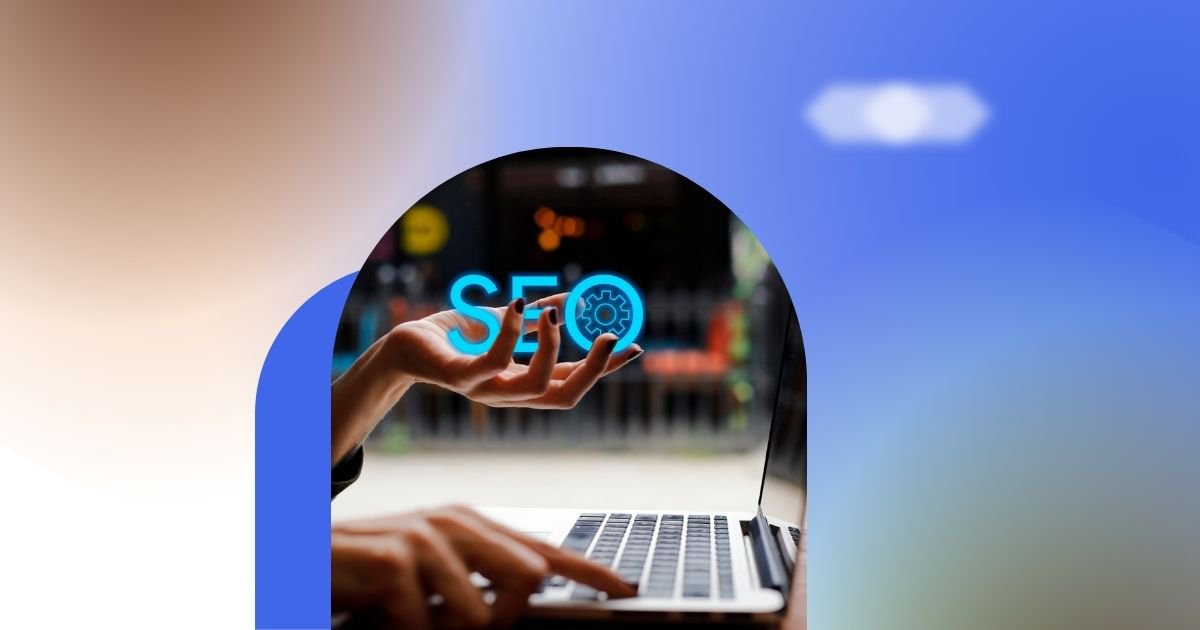Customer service is the heartbeat of your business. Even with amazing existing products, it’s the way you engage with clients that makes the difference, that is why B2B customer service is important.
Strong interactions can elevate your company, while poor ones can lead to its downfall. Prioritize those connections—they’re what truly set you apart.
As we move into 2025, the landscape of B2B customer service is evolving. Clients now expect personalized, efficient, and proactive support—just as they do in B2C interactions.
In niches with little competition, some B2B companies cut corners on their customer service. But a client’s memory is long. When a competitor does emerge, lackluster and disappointing customer service will ensure your clients quickly flee to greener pastures.
In order to remain competitive and cultivate loyal clients, you must consistently wow your clients with your level of care, attention, and competence at every touchpoint.
Retaining clients is much cheaper than finding new ones amidst constant churn. Besides, you may find that referrals make up a large part of incoming clients, and if your customer service suffers, referrals will suffer as well.
Let's go deeper into the importance of B2B customer service and how it can shape client relationships in the coming year.
The Importance of B2B Customer Service in 2024
B2B customer service is distinct from its B2C counterpart in several ways, primarily because of its complexity, need for personalization, and focus on relationship-building. While B2C interactions often center around quick transactions, B2B relationships involve ongoing contracts, multiple stakeholders, and significant investments.
Here, the impact of customer service extends long beyond immediate resolution. It’s key to retaining clients and developing long-term partnerships, and it ultimately drives revenue growth.
Effective B2B customer service can create a competitive edge. Your clients know when their needs are being prioritized and when they are being brushed off or ignored.
It’s tempting to cut costs by spending very little time, energy, and money on having high-quality employees who are skilled at interacting with clients. After all, your business might be the only one in the area offering a particular service or might have a long-term contract with a large entity that makes up most of your business.
So why thin your margins with expensive labor costs?
Every business is replaceable—and doomed if they forget it. Contracts can be canceled. Competitors arise. You might even be planting the seeds of your own competition by treating clients poorly when a business-savvy entrepreneur sees the gap you’ve left in the market.
High-quality B2B customer support will enable your business to succeed in the long term, reducing churn rates and increasing customer lifetime value. Exceptional service is not just a nicety, but a necessity in 2025.
Top Trends Shaping B2B Customer Service in 2025
Let’s dive into the top four trends in B2B customer service in 2025, taking a close look at each one.
Proactive Customer Service
Anticipating customer needs has become a hallmark of successful B2B customer service. Companies are increasingly adopting proactive support strategies to identify potential issues before they escalate.
Clients feel seen and appreciated when problems are solved and solutions are offered before they ask. Proactive support is a great way to wow your clients and keep them talking about you. Plus, it reduces support costs by preventing crises before they happen.
Personalized Experiences
In the B2B landscape, personalized experiences are part of the secret sauce for success. Clients want to feel understood and valued, not shunted off to the side or handed an ill-fitting cookie-cutter solution.
Be sure to track your clients across various metrics, learning which are key to their success—and by extension, yours. Using this data, your business can determine the most effective ways of working with distinct types of clients.
In a B2B coaching environment, you may observe that companies working at different revenue levels and different stages of business scaling run into different problems.
You’ll be able to anticipate those needs and cater to them more effectively, instead of handing your client a basket of ideas, many of which will not be relevant, and hoping one will stick.
By analyzing customer interactions and preferences, you can also tailor your communications and recommendations to them, enhancing their overall experience. This is another great way to leverage data to thrill your clients with personalized interactions.
Omnichannel Engagement
Today's B2B clients engage across multiple channels, and consistency is key. Offering omnichannel support ensures that customers receive a seamless experience, whether they reach out via email, chat, or phone.
Maintaining multiple channels may seem inconvenient, but it’s not as inconvenient as losing a client who needs help but finds contacting your company difficult. It’s also important to note that different needs and even different generations of clients will prefer distinct communication channels.
With a multi-faceted approach, businesses can cater to different preferences. However, it’s important to treat each communication method as a priority: don’t let any channel become an afterthought.
Stellar customer service translates into loyalty and referrals. In the end, if your business only has the bandwidth to offer great service in one or two communication channels, stay focused and wait to offer another until it can receive the attention.
AI-Driven Customer Insights
Artificial intelligence is revolutionizing B2B customer service by providing valuable insights into customer behavior. Using AI tools to analyze data, businesses can identify patterns in service requests, enabling them to craft more tailored responses or pinpoint problem areas, and so much more.
Predictive analytics, for example, can analyze historical data to identify patterns and predict future customer behavior. AI can be trained to anticipate when a customer might need support based on past interactions or usage patterns, helping businesses to proactively address issues.
At other times, businesses can use AI to analyze current and ongoing interactions, sifting through large volumes of data to identify emerging trends in customer inquiries or issues, or to automatically track key performance indicators (KPIs) across the customer life cycle.
Best Practices for Delivering Exceptional B2B Customer Service
Everyone says they want to offer great customer service, but how can a business actually make that happen, consistently and effectively?
Foster Strong Client Relationships
Support teams should focus on cultivating long-term partnerships. Prioritize open communication and transparency, even when mistakes happen. Train your teams to actively listen to clients, address their concerns promptly, and regularly check-in.
Active listening demands that the hearer listen to understand, not to respond. The goal of each team member should not be to silence the customer as quickly as possible but to ensure that each individual feels deeply understood.
As FBI negotiator Chris Voss learned in his long and successful career, even simple interactions can forge strong connections through what he calls tactical empathy, of which active listening is key.
If your support team cannot easily resolve a client’s problem, if the client knows they are heard and understood, they will be much more enthusiastic and forgiving.
Even an “unsuccessful” problem-solving session can lead to loyalty and future endorsements, as long as the customer knows your team has valued them highly, listened well, and worked hard on their behalf.
Optimally, your entire teams will be able to quickly resolve client problems each and every time, but we are all human. Slip-ups happen. When they do, you want your clients to say, “Hey, even though the day didn’t go the way I wanted, I know you have my back and I trust you enough to keep bringing my business back to you.”
Train Customer Support Teams Effectively
A knowledgeable—and empathetic—support team is crucial for delivering exceptional service. Ongoing training should not just drill product knowledge and stress average resolution time, but should also encourage the growth of soft skills and problem-solving abilities.
Beyond that, however, B2B businesses need to see their whole ecosystem of employees as part of the great customer service experience their clients are seeking. Customer service doesn’t just begin when the client has a problem; it’s key across every interaction.
Implement Advanced CRM and Support Tools
Invest in CRM and support platforms tailored for B2B needs. These tools can track customer data, manage complex support tickets, and improve overall efficiency.
Ultimately, using tools designed for the job you need them to do—rather than cobbled-together software offerings that mostly work—can streamline your processes and enhance service delivery. Let your employees focus on serving clients, not wrestling with clunky software.
Measure Success with Relevant KPIs
Establish key performance indicators (KPIs) specific to B2B customer service. Important metrics include:
- Customer Satisfaction Score (CSAT): Provides immediate feedback on specific interactions, helping businesses gauge service quality.
- Net Promoter Score (NPS): Measures long-term loyalty and the likelihood of clients recommending the service, indicating overall satisfaction.
- First Contact Resolution (FCR): Measures the percentage of customer inquiries or issues resolved during the first interaction and highlights inefficiencies.
Utilize Feedback Loops to Drive Improvement
Gathering and acting on client feedback is vital for continuous improvement. In the business-to-business environment, each client represents a significant relationship, making it essential to measure satisfaction regularly.
But without a way to act on that data, measuring satisfaction is useless. Make sure that your organization implements feedback loops that can drive actual change.
Then, once you make improvements, follow up with clients to let them know you value their feedback so much you implemented changes. In a world where too few businesses care to listen to their clients enough to change direction, yours will be a breath of fresh air—gaining you a lot of loyalty and frequent word-of-mouth recommendations.
How Outsourcing Can Enhance B2B Customer Service
As businesses seek to improve their customer service, many are turning to outsourcing. Outsourcing can save money, offer access to specialized skills, and increase scalability.
By partnering with experienced service providers, businesses can focus on their core competencies while still making sure that customer service remains a priority.
From time to time, outsourcing has gained a bad name when businesses have used it as a way to cut costs without also improving quality. That’s not the goal here. Customer service is not everyone’s specialty—nor does it have to be.
Each person who interacts with clients should have at least a moderate amount of competency in those interactions, but it is okay to lean on outside expertise to take up the gap.
In fact, outsourcing your customer service can leave core members of your business with more time to focus on their areas of expertise, which are the foundation of your offering.
Partnering with Wing Assistant for Exceptional B2B Customer Service
Wing Assistant stands out as an ideal partner for B2B companies looking to improve the quality of their customer service.
We offer expert support, including access to skilled customer service representatives trained specifically in B2B dynamics.
Our solutions are cost-effective as compared to in-house teams, and our flexible support options grow with your business.
Take, for example, our client Mountain Gazette: They successfully improved their B2B services with the help of Wing Assistant, which allowed them to focus on content creation, their area of expertise.
Transform Your B2B Customer Service Strategy in 2025
Remember: The best practices for B2B customer service in 2025 include proactive support, personalization, effective communication, and solid data analytics. Each of these strategies helps meet client expectations, foster long-term partnerships, and maintain your competitive edge.
If you’re ready to elevate your B2B customer service strategy, consider a partnership with Wing Assistant. We offer top-tier expertise. Best of all, we make this exceptional customer service both scalable and cost-effective.
Explore Wing’s services to see how we can assist you with customer support. Learn more about Wing B2B Customer Service Representatives to find the right fit for your needs, or schedule a free consultation to discuss how Wing Assistant can transform your customer service approach.

Dianne has extensive experience as a Content Writer, she creates engaging content that captivates readers and ranks well online. She stays on top of industry trends to keep her work fresh and impactful. She has a talent for turning complex ideas into relatable stories. When she’s not writing, you’ll probably find her with a crochet hook in hand or working on a fun craft project. She loves bringing creativity to life, whether it’s through words or handmade creations.






